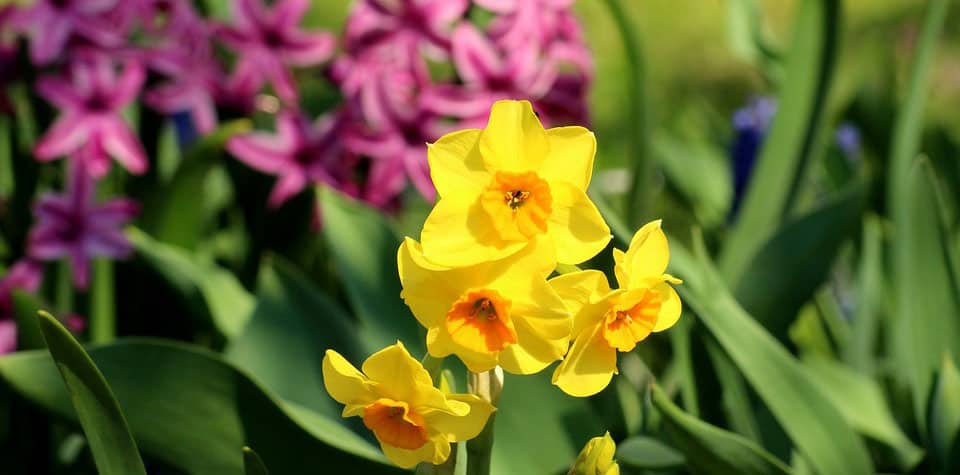
While traditionally recognized as a time of harvest, autumn is, for many flower gardeners, planting season. The glory of next year’s garden will be determined by the bulbs that go into the ground in early fall. The general rule when it comes to knowing what to plant when is this: if it blooms in the spring, plant it in the fall. Since spring bulbs need to “chill out” before they can bloom, you want to plant about six weeks before you expect the ground to freeze.
Most flower bulbs sold commercially originated in the Middle East or southern Europe, particularly the Mediterranean area. Many bulbs were first introduced to Europe by soldiers returning from the Crusades. In some areas, flowers drove regional economies. When tulip mania swept the Dutch people in the 1630s, a single bulb could fetch more than 10 times the annual living of a skilled worker.
Today, exotic varieties of bulbs from around the world are easy to find, but why not consider adding some native species bulbs to your garden? When you plant native you contribute to maintaining the balance of our natural ecosystem. As a bonus, every native plant has at least one specific native insect that is a specialist in pollinating it.
Planting success
What is commonly called a bulb can be classified as a true bulb, corm, rhizome, or tuber.
- A true bulb is a reduced stem with modified fleshy leaves, which are tightly folded around one or more flower buds (tulip, narcissus, lilies, allium)
- A corm is a rounded, vertical, swollen underground stem base covered with scale leaves (crocus, gladiolus, ixia, sparaxis)
- A rhizome is a swollen stem lying horizontally at or below ground level (bearded Iris, lily of the valley)
- A tuber is the swollen end of an underground stem or root with a bud or buds (dahlia, day lily, begonia)
Whatever the type of bulb, use the “three times” rule when planting them in beds: plant at a depth three times the height of the bulb and space them three times their width apart.
The foliage of many spring blooming bulbs dies back without a trace in summer and the risk of digging in that spot in the fall when looking for a place to plant more bulbs is considerable. One tip is to mark the location of each bulb by planting a grape hyacinth bulb nearly on top of the larger bulb. The grape hyacinth sends up leaves in the fall, clearly indicating where you’ve already planted.
Most bulbs thrive in a humus-rich, sandy loam soil with excellent drainage and a soil pH between 5.5 and 7.3. Have your soil tested to see if any amendments are needed. Both the CT Agriculture Experiment Station (CAES) in New Haven and the UConn Soil Lab in Storrs test soil. If the results show that phosphorus is low, bone meal is a great addition if you intend to let bulbs naturalize in an area. To improve poor soil, add compost, well-decomposed horse or cow manure, or leaf mold.
Burrowing rodents are a bulb garden’s most troublesome pests and in winter they can consume an entire bed. Planting in cages with 1/2 inch opening mesh hardware cloth can help deter the squirrels and voles. Laying hardware cloth on the top of the entire bed at ground level and securing with heavy weights on the corners can also prevent digging dogs from ruining your chances of having a colorful spring. Foraging animals tend to stay away from bulbs planted near the house, but hungry deer may be enticed to eat your tulips anyway!
As the flowers bloom, wait until the foliage and stems mature and fade to yellow before removing them—at least six weeks—to allow the bulb to store enough food for next season’s spectacular show.
- Mayapple (Podophyllum peltatum)
- White Trillium (Trillium grandiflorum)
- Red Trillium (rillium erectum)
- Fern leaf bleeding heart (Dicentra eximi)
- Dutchman’s breeches (Dicentra cucullaria)
- Virginia bluebells (Mertensia virginica)
- Jack in the Pulpit (Arisaema triphyllum)
- Spring beauty (Claytonia virginica)
- Trout lily (Erythronium americanum)
- Bloodroot (Sanguinaria canadensis)
- Camas(Camassia leichtlinii)




